
Outgoing chief's presentation to top executives sees five-fold rise in sales in 8 years.
Eight months before handing over the reins of the Tata Group empire to his successor, Ratan Tata has detailed a vision under which the group's turnover will hit $500 billion (Rs 25 lakh crore) by 2020-21.
That's a fivefold increase over the expected turnover of $100 billion (Rs 5 lakh crore) in the financial year that ended on Saturday.
Click on NEXT for more...
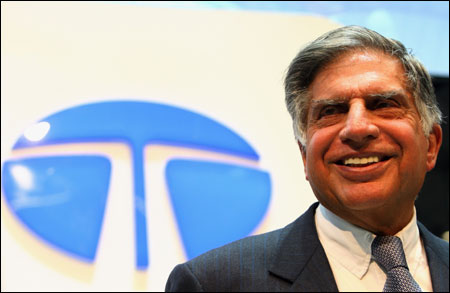
Tata unveiled his vision in an annual group management meet held a few weeks ago in Mumbai's Taj Mahal hotel and attended by about 500 top executives of various group companies.
The meeting was also webcast to other senior employees across the country and abroad. Tata's speech was followed by a question and answer session. The group chairman, who would step down in December this year, was accompanied in the meeting by Cyrus Mistry, who would take over the baton of the diversified group.
Tata told his top executives that despite scepticism, his push to internationalise the group through acquisitions had been a key factor in its growth. Without those acquisitions, the group would have reached a turnover of only $65 billion, he said.
A Tata Sons spokesperson declined to comment on the issue.
Click on NEXT for more...
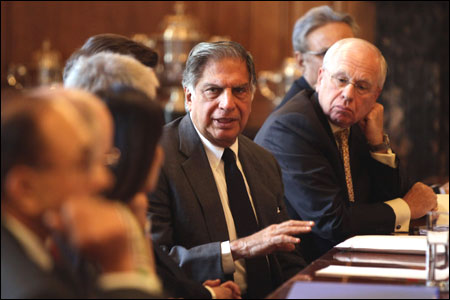
Tata's vision for the future assumes an annual compounded annual growth rate (CAGR) of over 20 per cent for the next nine years. This is in line with the growth he has achieved in his 20-year tenure as chairman.
The group registered a 22 per cent CAGR between FY 1992 and FY 2011, the tenure in which he was chairman.
That is much faster than the nominal growth rate in agricultural GDP during the period.
Click on NEXT for more...
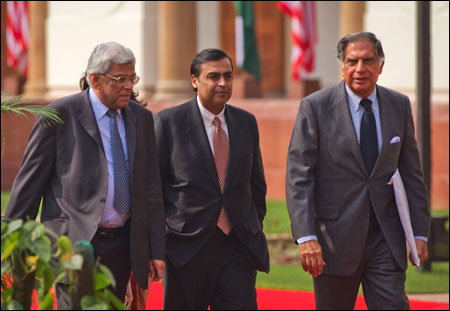
In 2010-11, the Tata group had a turnover of over $83 billion (Rs 4.15 lakh crore).
The scale of Tata's ambition is evident from the fact that in the 2011 Fortune 500 global list, the largest company was Walmart, with a turnover of $421 billion (Rs 21.05 lakh crore).
Click on NEXT for more...

During his tenure, Tata registered a 21.84 per cent CAGR in profit after tax (PAT) and 23.52 per cent in market capitalisation.
That, of course, comes down to 18 per cent if Tata Consultancy Services (listed in 2004) is excluded. Many analysts argue the group is still heavily dependent on the top three companies - TCS, Tata Steel and Tata Motors - which account for almost 72.43 per cent of sales and 83.57 per cent of PAT of the 31 listed companies in the group.
Click on NEXT for more...
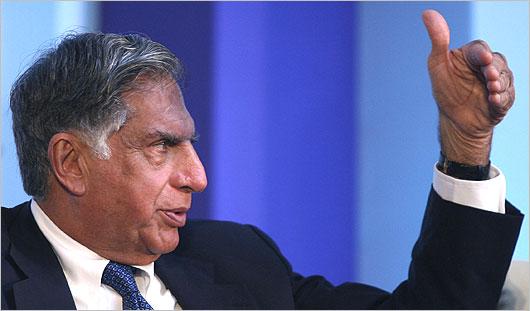
While Tata's single biggest achievement has been his ambitious global acquisition strategy, many have also argued that it has led to burgeoning debt in the group.
Between 1991 and 2003, the group made five purchases; in 2004, it rose to seven; in 2005, to 17; and between 2006 and 2010, there were 36 acquisitions.
Click on NEXT for more...
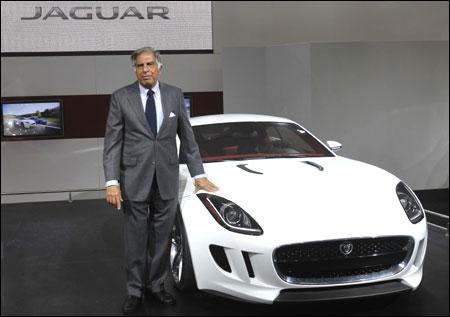
His big-bang takeovers started with Tata Tea's takeover of iconic UK brand Tetley, for $450 million in 2000.
In 2007, Tata Steel bought Corus, Europe's second largest steelmaker, for $12.1 billion.
Just a year later, Tata Motors paid $2.3 billion for Jaguar Land Rover.